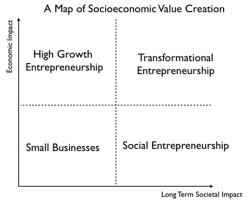Over the past couple of weeks, several articles have been published regarding social media’s role, specifically Facebook, in modern society. NYT did a great article on how technology has enabled us to sacrifice conversation for mere connection. The Atlantic came out with a fantastic article on increased loneliness despite increased connectivity. With Facebook, Twitter, Foursquare, and dozens of other social media websites, it’s pretty effortless to maintain dialogue between those already in our life, or to initiate conversations, albeit virtually, with those we’ve just met in real life, if at all. Not to forget the other forms of communication: skyping, texting, emailing, instant messaging, and of course communicating face-to-face.
Why then, given all these tools within our communication arsenal, do we feel lonelier then ever? The article raises a number of points, two of which really resonated with me: controlled distance and self-editing.
It’s hard to imagine life without digital communication. I remember when the only form of communication for the masses was through face-to-face interaction or a landline telephone. Back then, when someone wanted to talk to you, that interaction was instantaneous. No delayed response. Fast-forward to today, and it seems like most forms of communication enable for delayed responses. We get busy. We may forget to reply. Texts, messages, emails and posts can all go unanswered for hours or even days, a practice that while annoying, is generally accepted in today’s constantly on-the-run society. Technology has enabled us to dictate how, when, and with whom we communicate.
I find how we communicate, especially using technology, to be particularly interesting. Technology has given us the power to edit what we choose to communicate. Certainly we can edit what we communicate when speaking, but digital communication enables for greater awareness before we actually communicate; e.g., it’s easy to review something written in its entirety before hitting publish, post, or send, than it is to edit what we’re saying in real-time.
Like controlled distance, technology has given us greater control over what we choose to present. We can present to others what we want known. I think this is a positive improvement on the way we’re able to communicate. At the same time, I think that choosing what we want to communicate can also be detrimental. It’s easier to communicate successes than it is to freely disclose our challenges. This in turn, I believe, creates a warped perception of others living the “good” life, which can lead to feelings of missing out or even feeling depressed.
However, as The Atlantic writes, social media does have a positive role in human relationships. I for one took some time to see the value of social media as a valued form of digital communication. Growing up in the late 90s and 00s, my preferred means of digital communication was AIM. I still prefer instant messaging (on gchat) but I’ve grown to realize that not everyone shares my preferences. Texts, emails, direct messages, and wall posts are all valuable alternatives to digital communication, especially when finding a mutual time to connect is such a challenge.
I’d like to close by saying that in this age of modernity, no matter how many avenues to connect technology provides, they are at the end of the day just tools to facilitate conversations. This excerpt from The Atlantic article really sums up my views on the use of social media:
“Facebook can be terrific, if we use it properly. It’s like a car. You can drive it to pick up your friends. Or you can drive alone. How we use these technologies can lead to more integration, rather than more isolation.”

